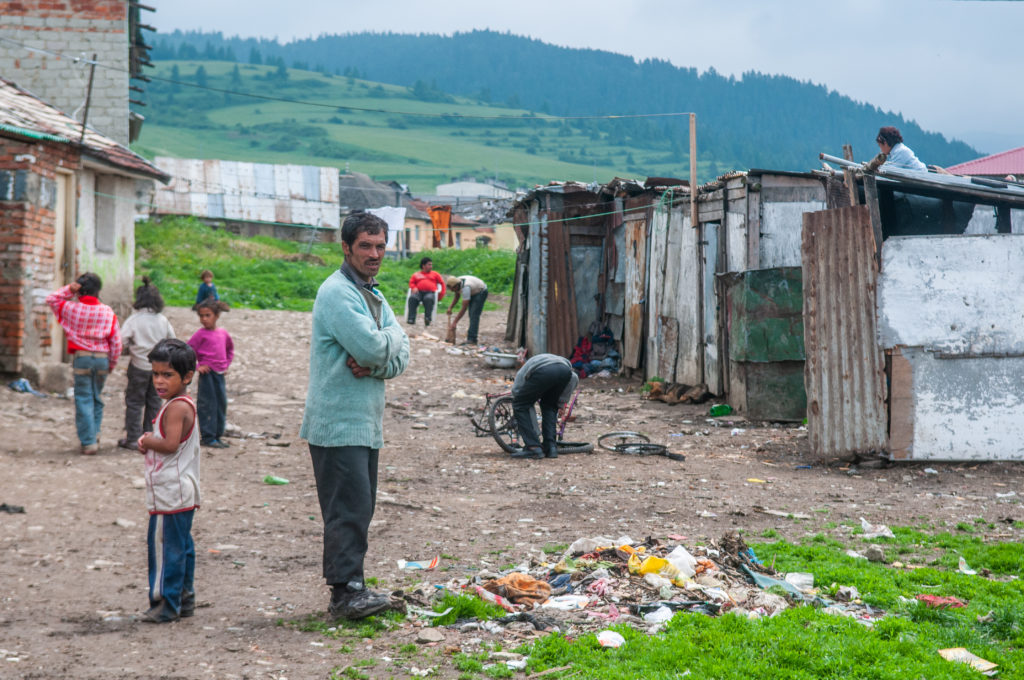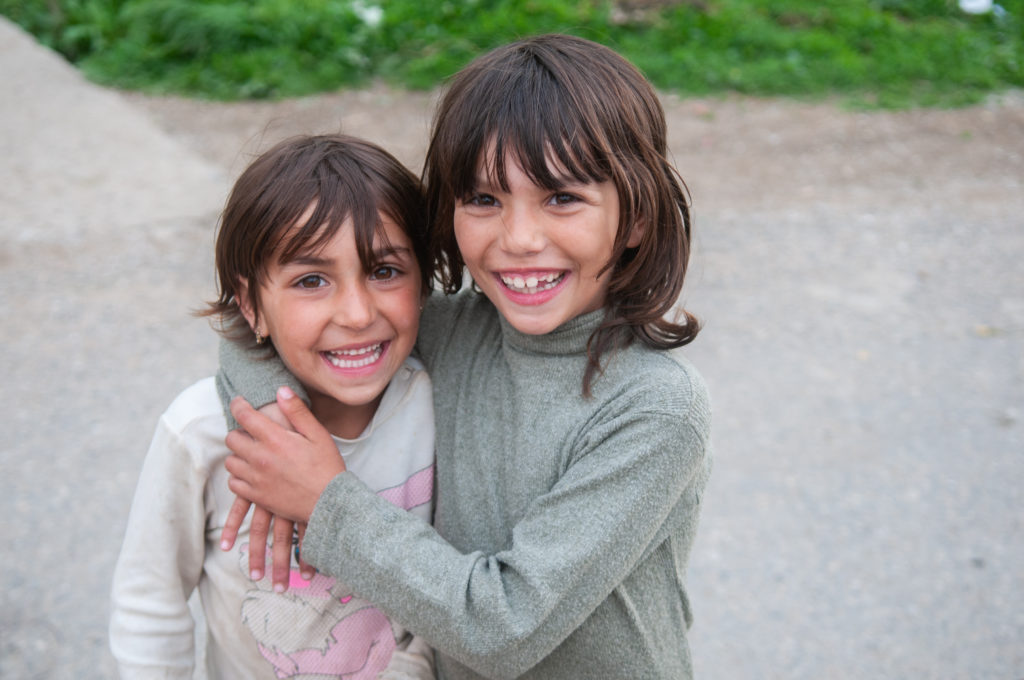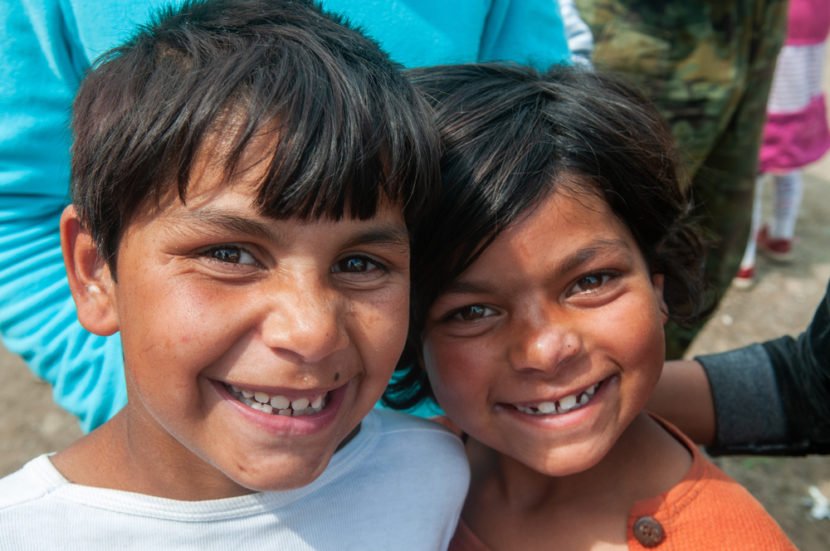Despite the global progress achieved through international efforts to stop the practice of child marriages, this is still a reality for many children, and Roma children are no exception. Decades of ethnic marginalization, poverty, deeply rooted stereotypes of sexuality, and women’s and girls’ roles in society, combined with the lack of a systematic approach to integrating the Roma population into local communities, have led to the child marriage practice still being prevalent in Eastern Europe. Regardless of the culture, these marriages must not be seen as part of the tradition but only as a detrimental violation of both human rights and the rights of a child.
Child marriage statistics among the Roma population in Eastern Europe
While child marriage is a phenomenon present in all Eastern European countries, including the Balkans, it is enough to see the examples of only some of them to understand the scope of the problem. According to earlier Save the Children reports, in Romania, where the Roma population accounts for 8.3% of the population, 6.7% of all adolescents aged between 15 and 19 got married (Marica, 2017).
The same source states that similar numbers could be found in other Eastern European countries as well, in Moldova the percentage being 9.9%, in Ukraine 6.4%, in Albania 6.5%, in Belarus 7.5%, and in Bulgaria 8.4%. In comparison, the European average at the same time was around 2% (Marica, 2017).
In Serbia, child marriage is a phenomenon that affects more than 50% of Roma girls younger than 18 (Luković et al, 2023). Even more devastating is the fact that 16% of Roma girls get married before 15 and 5% give birth at the same age (Antonijević, 2023). Looking at Bosnia and Herzegovina, five out of ten Roma girls and two out of ten Roma boys enter marriage before the age of 18 (Beker, 2019).
Earlier UK sources claim that even girls as young as 12 and 13 are regularly being married in Romania, Bulgaria, and Hungary before being brought to Britain, where they often fall victim to human trafficking and abuse. (Baker, 2019)
Legal reality: Child marriages among the Roma
As previously mentioned, although child marriages among the Roma have been overlooked for decades as a matter of culture and tradition, they are legally unacceptable as minors cannot give full consent, except in some countries and in special cases when a child aged 16 can enter into marriage based on a medical opinion, with the consent of their parents or guardians, and with the permission of the court (Marica, 2017). With this in mind, introducing stricter legal policies and applying existing ones is legally completely justified.
One of the freshest positive changes being introduced is Serbia’s working on an initiative to label child marriages as a form of human trafficking, thus giving the state the opportunity to fight the harmful practice at a higher level (Antonijević, 2023). However, one of the issues is that the Roma population often lives outside of the legal systems of local communities, which makes tracking child marriages that much more difficult and requires serious field work. In relation to this, making local Roma communities legally visible is of crucial importance.
Poverty’s role in driving child marriage within the Roma population

A predominant part of the Roma population in Eastern Europe still suffers discrimination and isolation. Not surprisingly, the most vulnerable among the group are children, especially young girls. Many of the children, not having any official documents, are invisible to the governmental and legal systems, thus being unable to exercise their rights to health, protection, and education and, consequently, to break the generational chain of neglect, abuse, and utter poverty.
In such circumstances, marrying off a daughter is often seen as a way for a family to reduce the number of mouths to feed, her virginity being the only trading token for those family units who own no material possessions. For some, it is also a way to provide her with a better life, which it is believed she might have in a new family (Unicef, n.d.).
On the other hand, families are eager to marry their sons to continue the family and even gain additional workforce that will help the family survive. This, combined with the, often complete, lack of education and the decades-long lack of systematic response by relevant governments, as well as the tradition where marrying a virgin is a must, makes combating child marriage a difficult and complex issue. (Human Rights Fund Progress, 2017).
Breaking the cycle: The power of education in ending child marriage
On average, the probability of a girl engaging in marriage before the age of 18 is 6% lower for every additional year she stays in secondary education (Girls Not Brides, n.d.). Results of a study conducted in Ethiopia show that girls whose mothers are educated are two times less likely to marry before they turn 18 (Rodriguez, 2022).
These statistics alone are enough to make it clear that education is the key factor in combating child marriage. However, years of coping with the social and economic transition and sectoral reform that most of the Eastern European countries have undergone have resulted in the rights and needs of Roma children being overlooked and neglected (Unicef, 2011).
Coming from families in which parents have not received proper or any education and where their births are often not being registered at all, they stand low chances of entering even kindergartens and elementary education systems.
Even when they do, they have to cope with segregation in schools that is tightly related to the poor economic status of their families, insensitivity to their cultural and linguistic background, but also the lack of a standardized written language used within their communities, as well as with the shortage of staff in educational institutions that are qualified to work in multicultural schools or schools specialized for working with these children (Unicef, 2011).
Enrolling Roma children in education: Challenges and initiatives
In 2005, the Decade of Roma Inclusion initiative was launched, and Bulgaria, Croatia, the Czech Republic, Hungary, Montenegro, Romania, Serbia, Slovakia, and the Former Yugoslav Republic of Macedonia (as it was still called back then) and today’s North Macedonia signed the Decade Declaration, the official goal of which was to work toward eliminating discrimination and including the Roma in the regular social streams of the countries (UN Chronicle, n.d.).
The initiative acknowledged the importance of ensuring access to compulsory education, improving the quality of education, implementing integration and desegregation, and expanding access to preschool education as well as secondary, postsecondary, and adult education (Decade of Roma Inclusion, 2005). Multiple projects had been launched across the signatory countries, and while literacy was one of the biggest achievements, early dropouts and low enrollment in secondary education have remained serious issues that require continuous efforts.
Efforts in this area have continued after the Decade of Roma Inclusion, as can be seen in the examples of Romania, where the newest national reforms in school education stipulate the importance of the access of Roma students to high school, admission of candidates for special vacancies for Roma in public high school and vocational/dual VET education being organized (Eurydice, 2023), or Serbia, where in 2021 education was marked as one of the top two areas to work on in regard to the social inclusion of Roma (Social Inclusion and Poverty Reduction Unite, 2021). However, it appears that in practice more needs to be done.
Progress and persistence: What has been done and how to move forward
Significant progress has been made in terms of fighting the practice of child marriages among the Roma population in Eastern Europe, including the Balkans, and Humanium finds the changes to be promising. Stricter laws have been implemented in some countries, and a large number of projects have been launched throughout the years, aiming to integrate young Roma into local communities and provide them with access to quality education and job opportunities.
However, the situation in the field makes it clear that more efforts must be put into combating this harmful practice that has deprived thousands of children of childhood and any chance to lead a healthy life. As it is a complex, multi-faceted issue, it requires a holistic approach, hard work, and persistence. Governments need to follow their own laws in practice and work on amending existing ones, ensuring the necessary financial and social conditions for putting an end to the violation of basic human and child rights.
At the same time, companies, organizations, and individuals should be encouraged to contribute to solving the problem in ways suitable to them. Finally, and often most importantly, individuals on an everyday level must not turn their heads away from the hardships Roma children suffer, as integration, which is a crucial element in combating the issue, is never a one-way street.

Humanium remains committed to safeguarding children’s human rights, including their right to education, right to protection and right to freedom. If you want to contribute to Humanium’s cause, please consider making a donation, volunteering or becoming a member.
Written by Zeljka Mazinjanin
Bibliography:
Anti-discrimination database (n.d.), Decade of Roma Inclusion 2005-2015. Retrieved from Anti-discrimination database at https://adsdatabase.ohchr.org/IssueLibrary/HUNGARY_Decade%20of%20Roma%20Inclusion%202005-2015.pdf, accessed on August 25, 2023.
Antonijević Milena (2023), Serbia to label child marriage as human trafficking. Retrieved from Euractiv at https://www.euractiv.com/section/politics/news/serbia-to-label-child-marriage-as-human-trafficking/, accessed on August 25, 2023.
Beker Kosana (2019), Regional Report on Compliance with the UN Convention on the Elimination of All Forms of Discrimination Against Women (CEDAW) and Council of Europe Convention on Preventing and Combating Violence Against Women and Domestic Violence (Istanbul Convention) relating to discrimination of Roma women in the area of healthcare, child marriages and offering support and protection to Roma women in cases of domestic violence. Retrieved at https://eca.unwomen.org/sites/default/files/Field%20Office%20ECA/Attachments/Publications/2019/10/Regional%20Report%20on%20discrimination%20of%20Roma%20women%20English.pdf, accessed on August 25, 2023.
Eurydice (2023), Romania-National reforms in school education. Retrieved from Eurydice at https://eurydice.eacea.ec.europa.eu/national-education-systems/romania/national-reforms-school-education, accessed on August 25, 2023.
Girls Not Brides (n.d.), Child Marriage and Education. Retrieved from Girls Not Brides at https://www.girlsnotbrides.org/learning-resources/child-marriage-and-education/, accessed on August 25, 2023.
Human Rights Fund Progress (2017), Romani Customs and Traditions: Marriage. Retrieved from Human Rights Fund Progress at https://rozvitok.org/en/romani-customs-and-traditions-marriage/, accessed on August 24, 2023.
Luković Marijana et al (2023), Prevention and elimination of child marriages and economic empowerment of Roma women at the local level in Serbia. Retrieved from Praxis at https://www.praxis.org.rs/images/praxis_downloads/Prevention_and_elimination_of_child_marriages-Analysis.pdf, accessed on August 25, 2023.
MailOnline (2015), Roma gipsy girls as young as 12 are being ‘forced to live in arranged marriages in scandal-hit Rotherham. Retrieved from MailOnline at https://www.dailymail.co.uk/news/article-2994377/Roma-gipsy-girls-young-12-forced-live-arranged-marriages.html, accessed on August 25, 2023.
Marica Irina (2017), Save the Children: Over 9,000 girls in Romania become mothers at a young age. Retrieved from Romania-Insider.com at https://www.romania-insider.com/girls-romania-mothers-young-age, Accessed on August 25, 2023.
Rodriguez Leah (2022), 5 Steps We Can Take Right Now to Protect Girls From Child Marriage. Retrieved from Global Citizen at https://www.globalcitizen.org/en/content/how-to-prevent-child-marriage/, accessed on August 25, 2023.
Social Inclusion and Poverty Reduction Unite (2021), Technical Meeting Held on Social Inclusion of Roma in the Republic of Serbia. Retrieved from Social Inclusion and Poverty Reduction Unite at https://socijalnoukljucivanje.gov.rs/en/technical-meeting-held-on-social-inclusion-of-roma-in-the-republic-of-serbia/, accessed on August 25, 2023.
Unicef (n.d.), Child marriage among the Roma population in Serbia: Overview of Ethnographic Research. Retrieved from Unicef at https://www.unicef.org/serbia/en/child-marriage-among-roma-population-serbia, accessed on August 24, 2023.
Unicef (2011), The Right of Roma Children to Education. Retrieved from Unicef at https://www.unicef.org/eca/media/1566/file/Roma%20education%20postition%20paper.pdf, accessed on August 25, 2023.
UN Chronicle (n.d.), The Decade of Roma Inclusion: Addressing Racial Discrimination Through Development. Retrieved from UN Chronicle at https://www.un.org/en/chronicle/article/decade-roma-inclusion-addressing-racial-discrimination-through-development, accessed on August 26, 2023.


